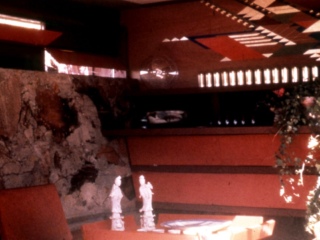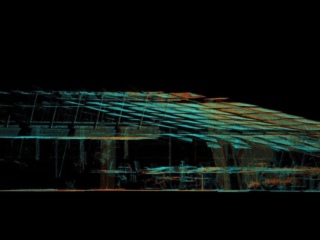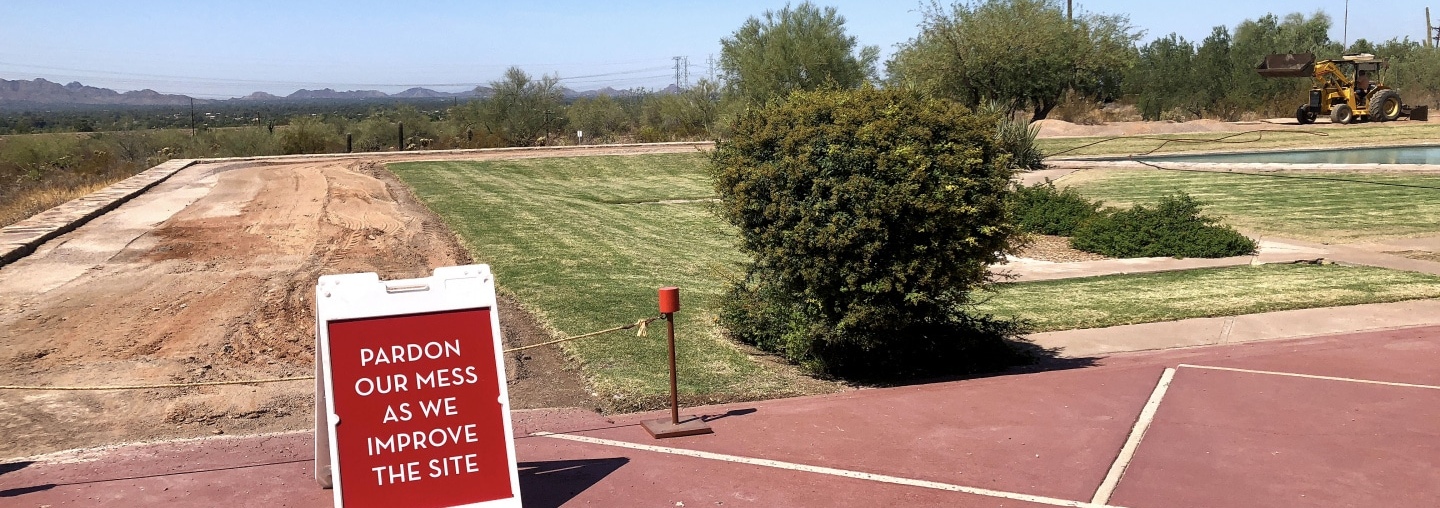
New Pathway Material Installed at Taliesin West Increases Site Accessibility
Frank Lloyd Wright Foundation | Oct 1, 2019
As the Frank Lloyd Wright Foundation continues ongoing efforts to improve and preserve both Taliesin and Taliesin West, through a Challenge Grant from the National Endowment for the Humanities, we were recently able to increase the accessibility of Taliesin West by installing stabilized decomposed granite throughout the site. We spoke with Emily Butler, Foundation preservation manager to learn more about the project and overall benefits of the new material.
In September, thanks to a Challenge Grant from the National Endowment of the Humanities, a Quality of Life grant from the Christopher & Dana Reeve Foundation, and the Pakis Family Foundation (a supporting organization of the Arizona Community Foundation), the Frank Lloyd Wright Foundation preservation team partnered with Stabilizer Solutions to install stabilized decomposed granite throughout Taliesin West. This new material is meant to not only increase overall site accessibility, but also return the site to its original look. We spoke with Emily Butler, Foundation preservation manager, to gain more insight on this project and learn more about the benefits of this material.
BEFORE

Pea gravel on the Prow
AFTER
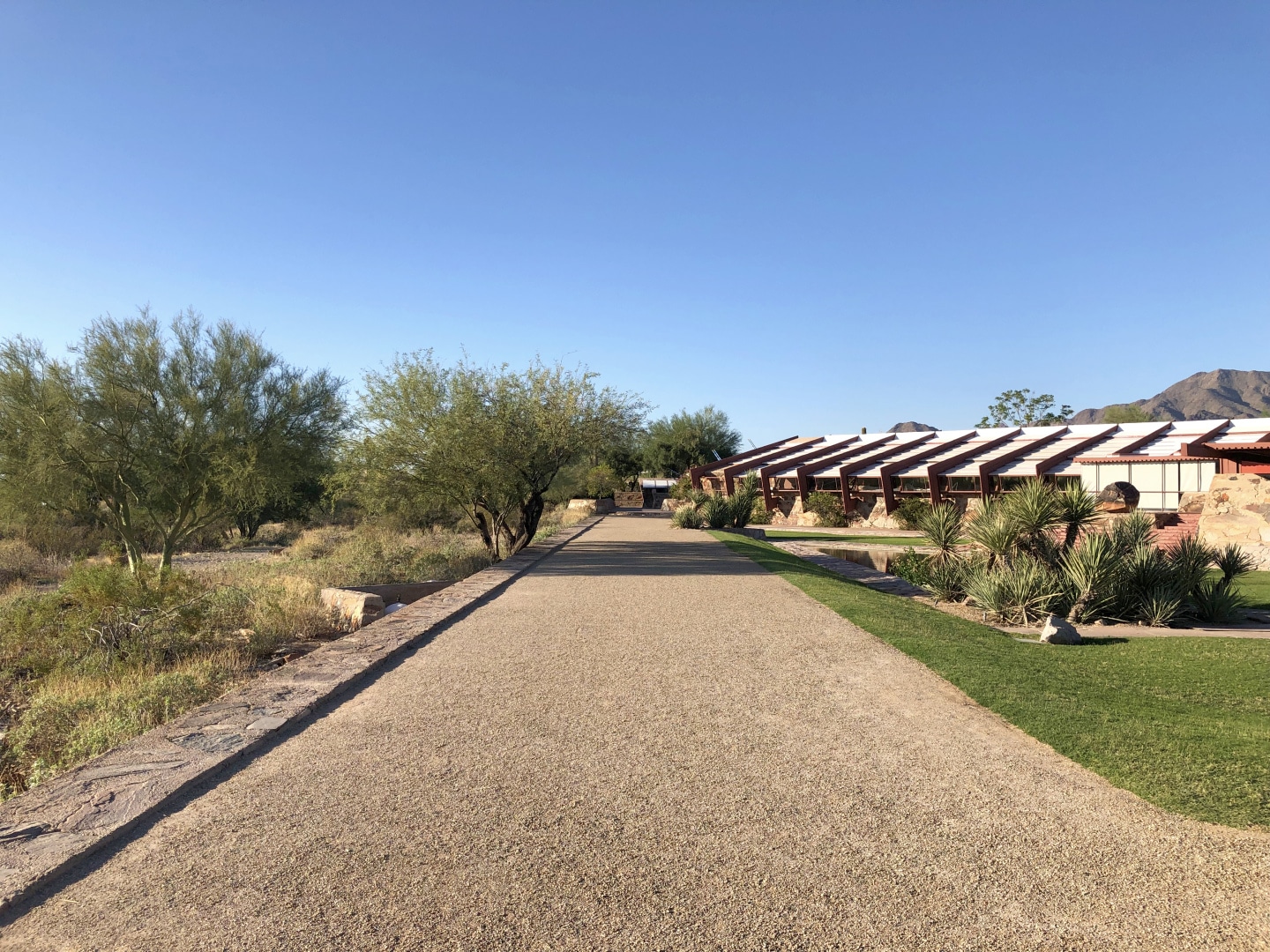
Stabilized decomposed granite on the Prow
Tell us about the stabilized decomposed granite project. Why is this something the Foundation’s preservation team decided to undertake?
Accessibility can be a difficult hurdle to overcome at historic sites. When they were built the same codes and regulations that maintain and promote life safety and accessibility today did not exist or were not enforced in the same manner. This can mean tight spaces and changes in level that are difficult or impassable for those with mobility challenges. It is sometimes the case that historic sites cannot be fully accessible without losing their sense of place and draw for tourists and users of the site. Often the accessible challenges at a site can also be their character defining features, such as the terraced levels and unique doorways at Taliesin West. Despite these challenges, accessible paths and alternative experiences can be created through innovative and sensitive design.
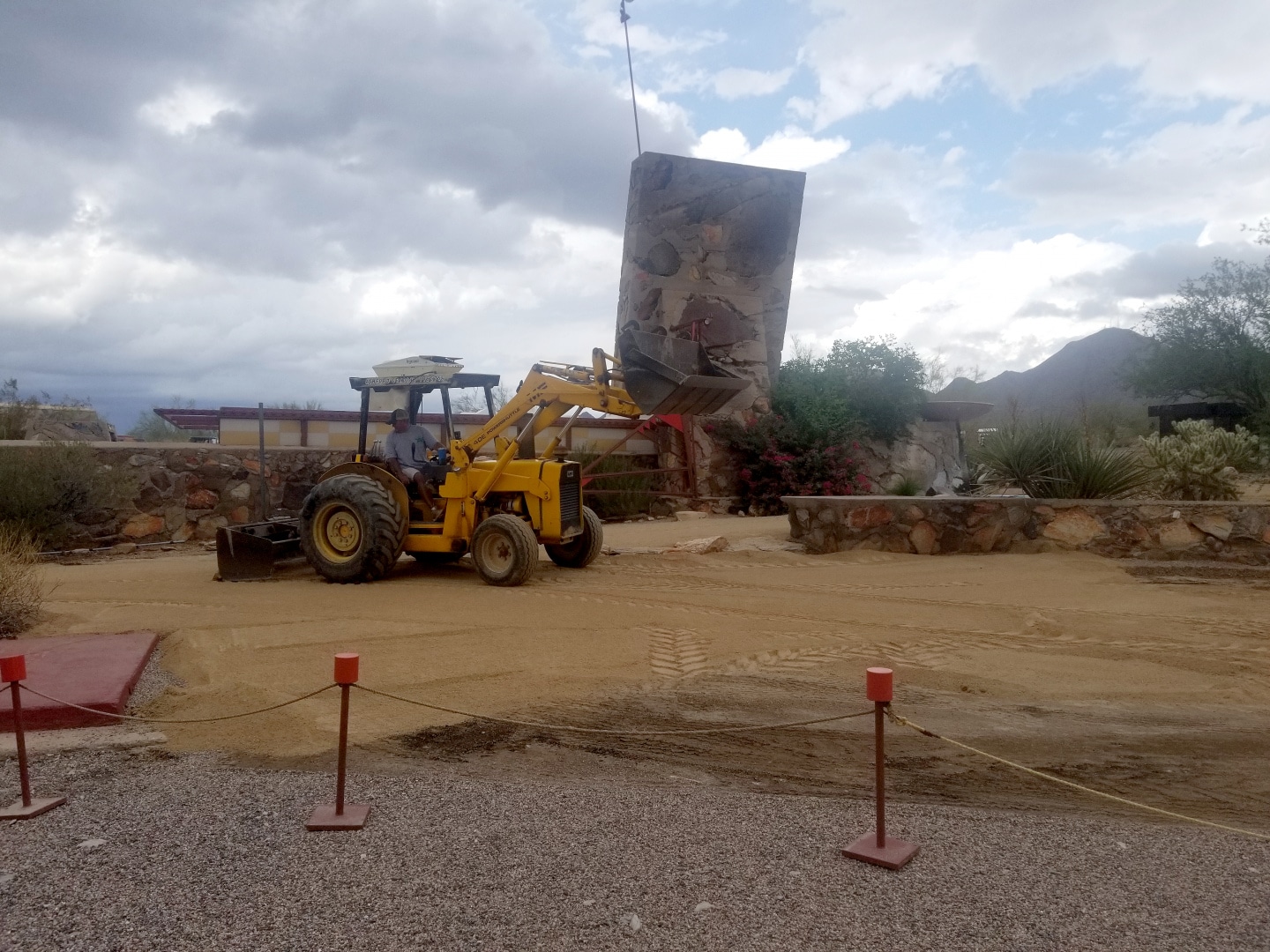
Ever since I started at the Foundation, it has been a top priority to increase accessibility at the site. To achieve greater accessibility, a pathway meeting ADA code requirements was designed from the Entry Court to the WWP Conference room where an accessible bathroom would be installed and guests could be walked through a virtual tour of the portions of the property they could not physically access.
A major portion of this pathway was formerly pea gravel, which was added after Wright’s lifetime and is not an approved accessible surface. To remedy this, and to bring back the more historically accurate ‘desert dirt’ look to these areas stabilized decomposed granite was installed.
Help us ensure that Taliesin West is welcoming and accessible for all visitors by supporting our preservation efforts to meet ADA compliance, with a gift to help us meet our match for the National Endowment for the Humanities Challenge Grant.
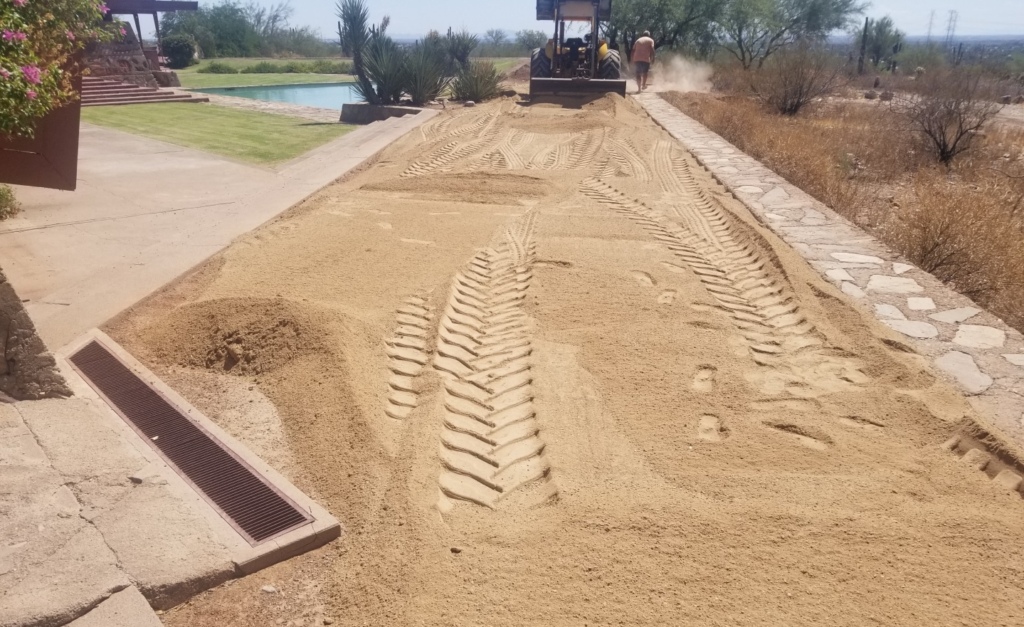
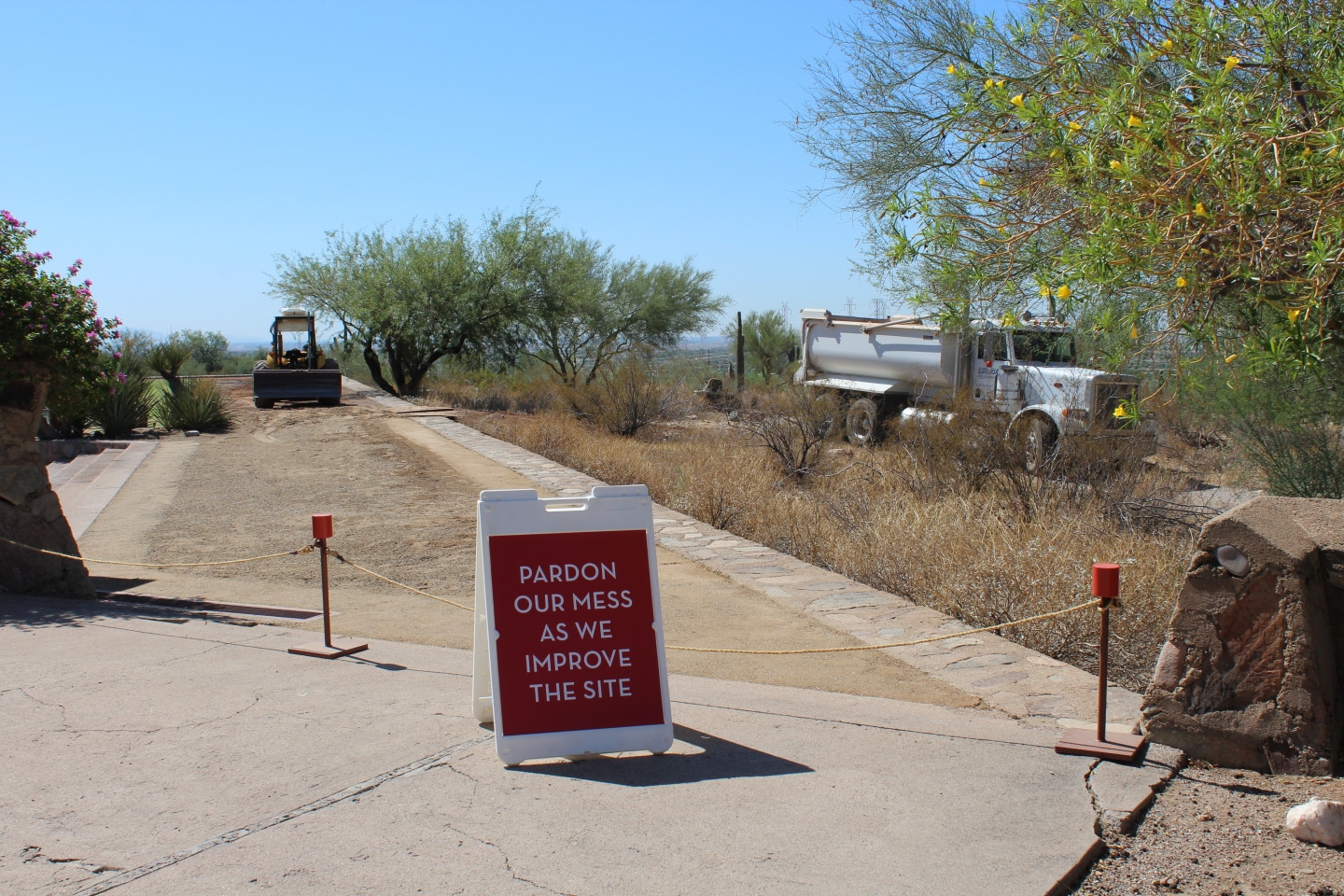
What is stabilized decomposed granite, and why is it preferred over what we had prior?
Stabilized decomposed granite is a natural and sustainable path system that is widely used, especially on trail systems and other outdoor pathways. Stabilized DG is local decomposed granite (1/4 minus soil mix) that is infused with a binder made with psyllium. The material is natural and sustainable, using local soil that is permeable and a great alternative to hardscaping. The stabilized dg hardens when water is added, creating an easy to traverse path that still has a natural look and feel to it. The pea gravel that was formerly there was difficult for wheelchairs and walkers to roll over and was not an original feature of Taliesin West. We are excited that we are able to achieve an accessible surface that is sustainable and is a better historical interpretation of these walkways and courtyards.
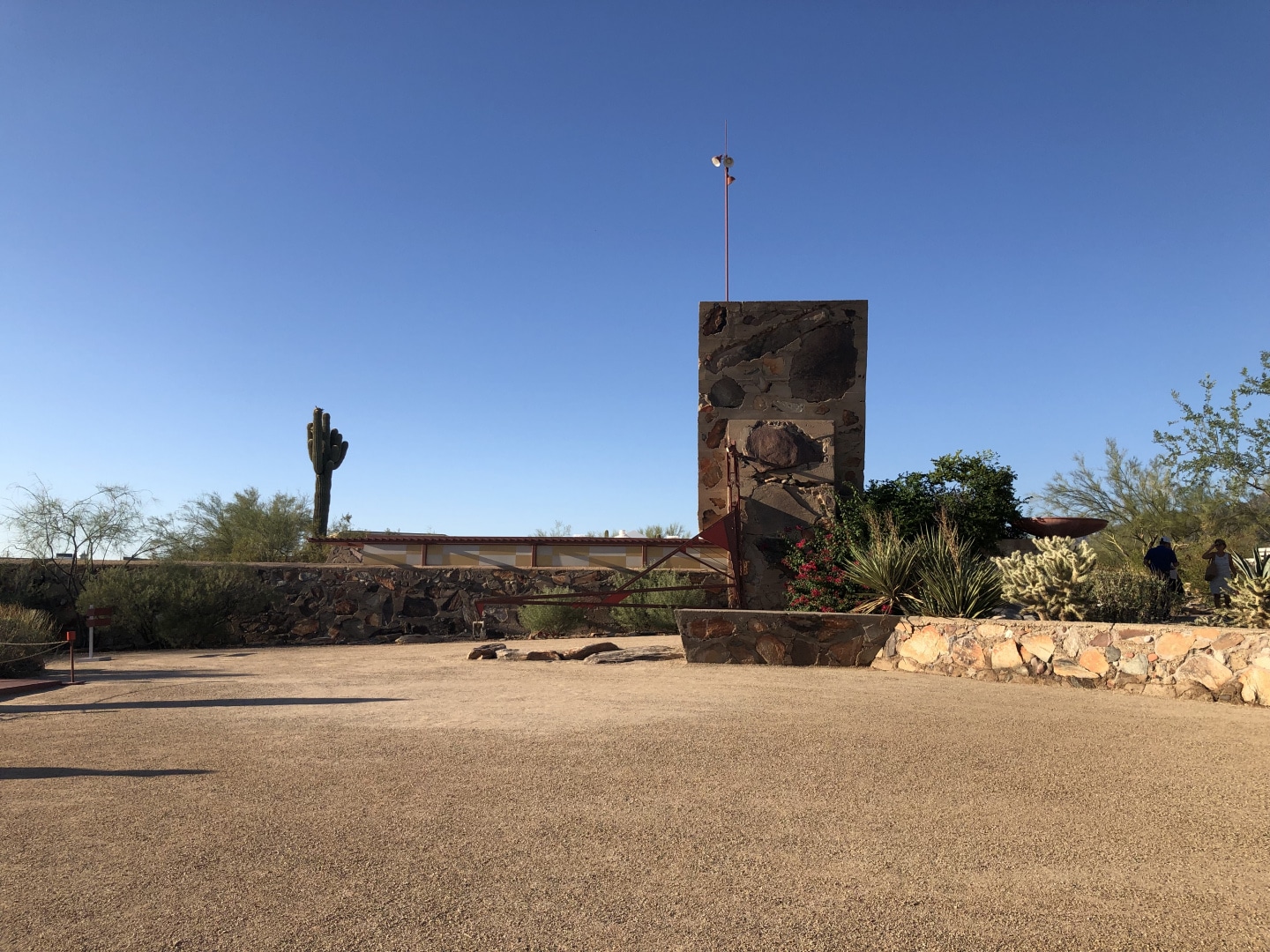
Who worked on the project?
As with everything, this was a group effort and the facilities team always pitches in to help get things prepared for the work to be done. The grading and installation was performed by the manufacturer of the stabilizer product, Stabilizer Solutions. We could not be happier with their work. They were incredibly easy to work with and really understood the needs of this important historical site.
How was this project made possible?
This project was made possible by a Challenge Grant from the National Endowment for the Humanities. We received a Challenge grant from them that includes accessible upgrades to the site, theatrical upgrades, and water infrastructure engineering.
This project has been made possible in part by a major grant from the National Endowment for the Humanities. Any views, findings, conclusions, or recommendations expressed in this blog, do not necessarily represent those of the National Endowment for the Humanities.


